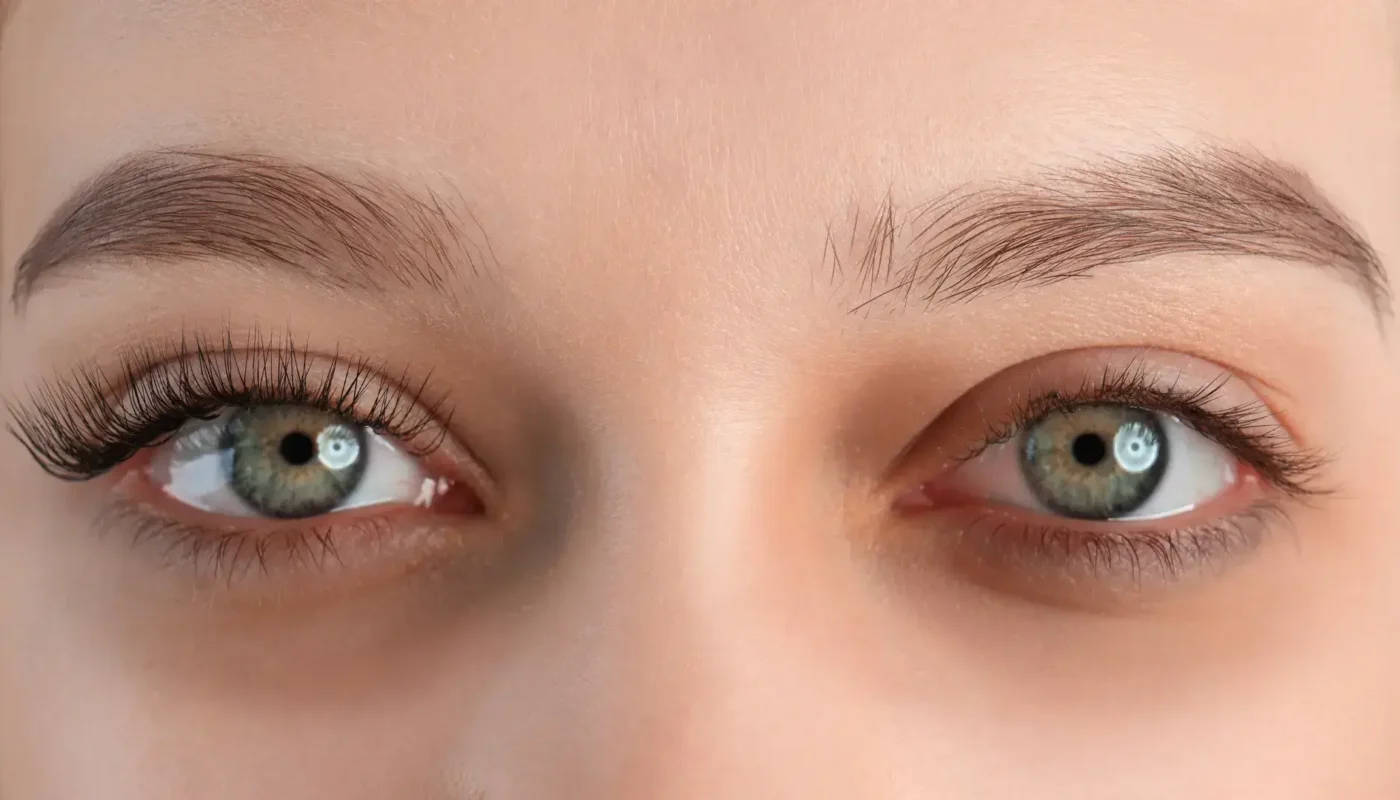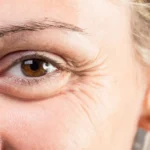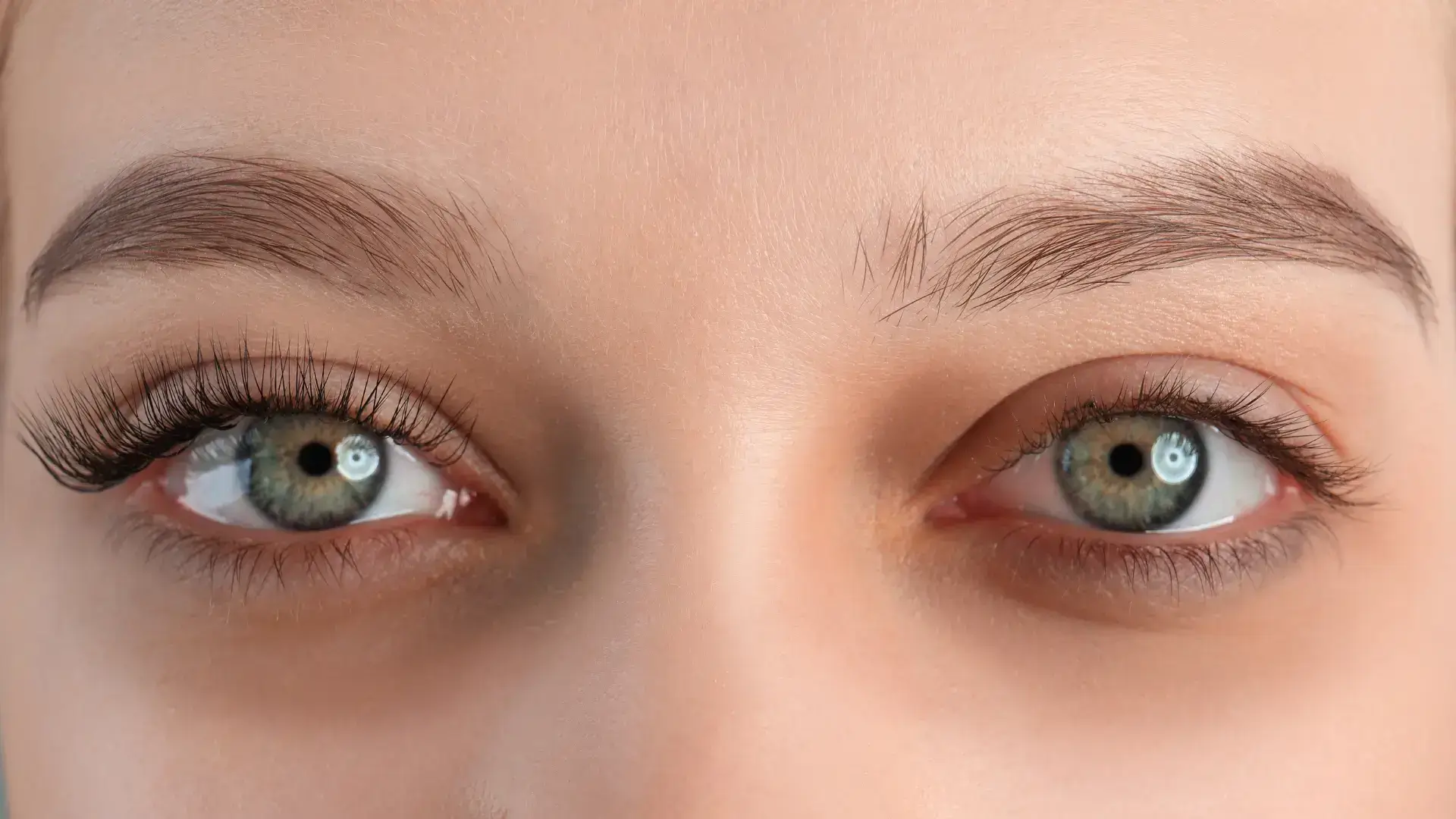
Experts have found that tear trough treatment with hyaluronic acid filler is safe and effective when performed using a cannula. A recent study highlights that a maximum of 1ml administered in one sitting between both eyes results in a very low pain rating, underscoring no significant complications and high patient satisfaction.
Hyaluronic acid (HA) filler for tear trough treatment presents a promising solution for those seeking aesthetic improvements. While it addresses tear trough, HA filler can also add volume, contour, and smooth signs of aging. In particular, Restylane tear trough injections can immediately and significantly address this concern, along with overall facial rejuvenation.
This article will provide an in-depth look at using Restylane tear trough treatments, specific injection techniques, patient selection criteria, and expected results.
Key Takeaways
- Restylane tear trough treatment can address these hollowing or dark circles, leaving patients satisfied with their rejuvenated look.
- Patients can maximize the benefits of Restylane injectables when licensed and experienced medical professionals administer them.
- Restylane injections can significantly improve the appearance of the tear trough area, but they are not a permanent solution.
- Like other aesthetic or medical procedures, typical side effects may arise after the Restylane tear trough treatment.
- Effective treatment requires a deep understanding of the tear trough’s anatomical considerations.
About: Medica Depot is your trusted all-in-one supplier, offering a range of high-quality medical injectables and supplies. Order Restylane online at Medica Depot today! Whether for health professionals, plastic surgeons, dermatologists, licensed estheticians, or other specialists, we can offer genuine, brand-name products you may need. With Medica Depot, we prioritize serving you better to improve the patient’s quality of life.
Anatomical Considerations and Tear Trough Issues
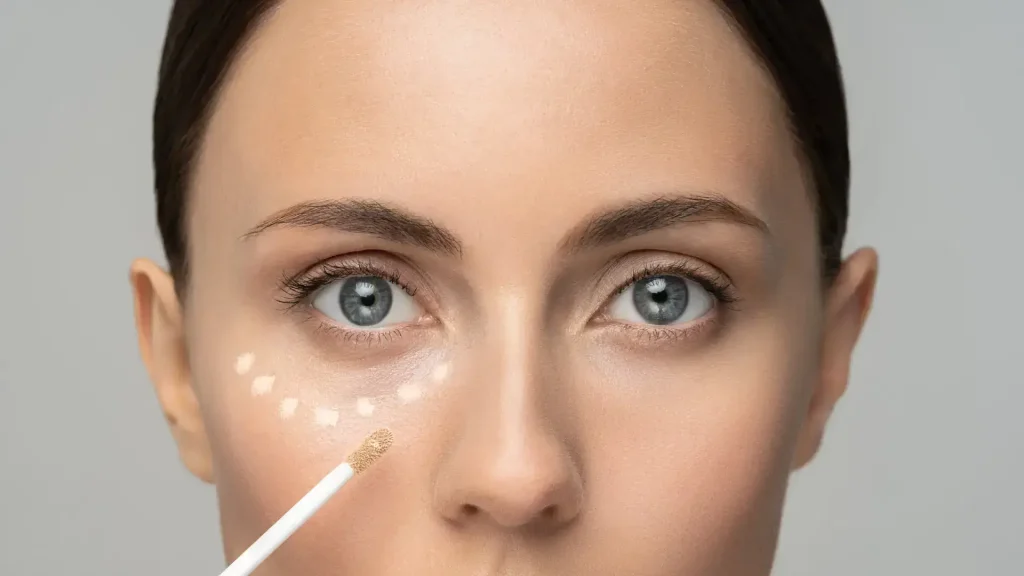
Patients must understand that the tear trough area is a complex anatomical region. The thin skin beneath the lower eyelid and upper cheek is the tear trough, revealing underlying muscle and blood vessels. Moreover, it sometimes shadows below the eyes, resulting in a tired look.
It’s where the skin transitions from the thicker, more elastic skin of the cheek to the thinner skin of the eyelid. It’s formed by attaching the orbicularis oculi muscle to the maxilla, creating a depression. Commonly, tear troughs develop as the lower eyelids lose elasticity and thickness as people age.
Individuals typically experience tear trough issues, such as hollowing or dark circles. Fortunately, Restylane tear trough treatment can address these concerns, leaving patients satisfied with their rejuvenated look. Hollowing occurs due to age-related fat loss or heredity, while dark circles are often due to thin skin revealing blood vessels or hyperpigmentation.
Restylane Injection Techniques for Tear Trough
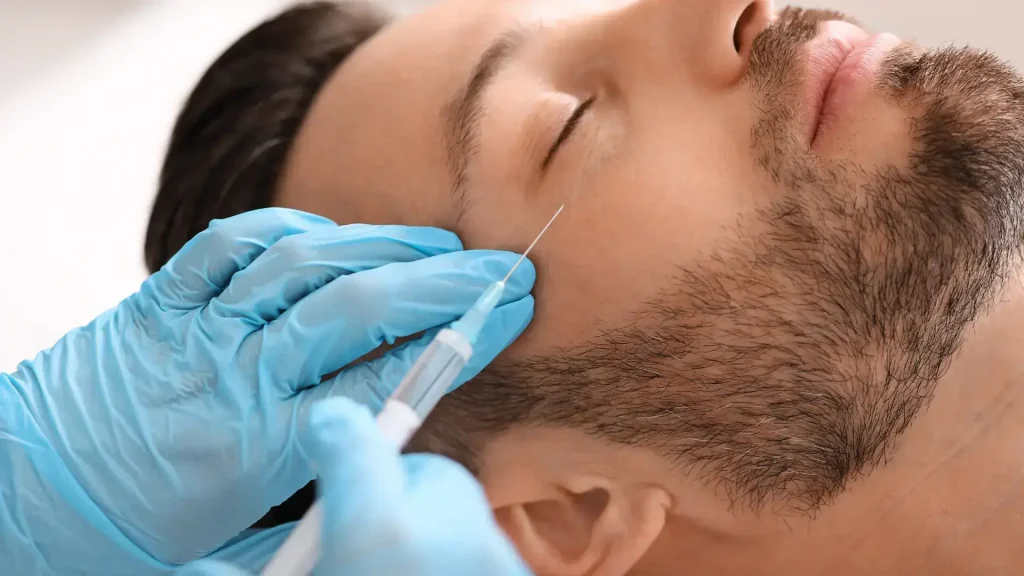
This injectable treatment offers a safe and effective solution for individuals seeking aesthetic enhancements, whether using Restylane for nasolabial folds, tear troughs, or marionette lines. Patients can maximize the benefits of this injectable when licensed and experienced medical professionals administer it.
According to the instructions for use, medical professionals may inject Restylane using a thin gauge needle (29 G x ½”) or a blunt cannula (25-27G with a cannula length of 1.5 or 2 inches). Moreover, they can also utilize proper injection techniques, such as:
- Linear Threading (antegrade and retrograde)
- Fanning
- Micro-bolus
- Serial puncture
- Possible combination of these techniques
Along with these specific injection techniques, precise placement is crucial to avoid risks or complications like lumpiness, uneven distribution, or Tyndall effect. Medical professionals must carefully control the dosage, avoiding overfilling and underfilling for no puffiness and inadequate correcting issues.
Patient Selection Criteria and Expected Results

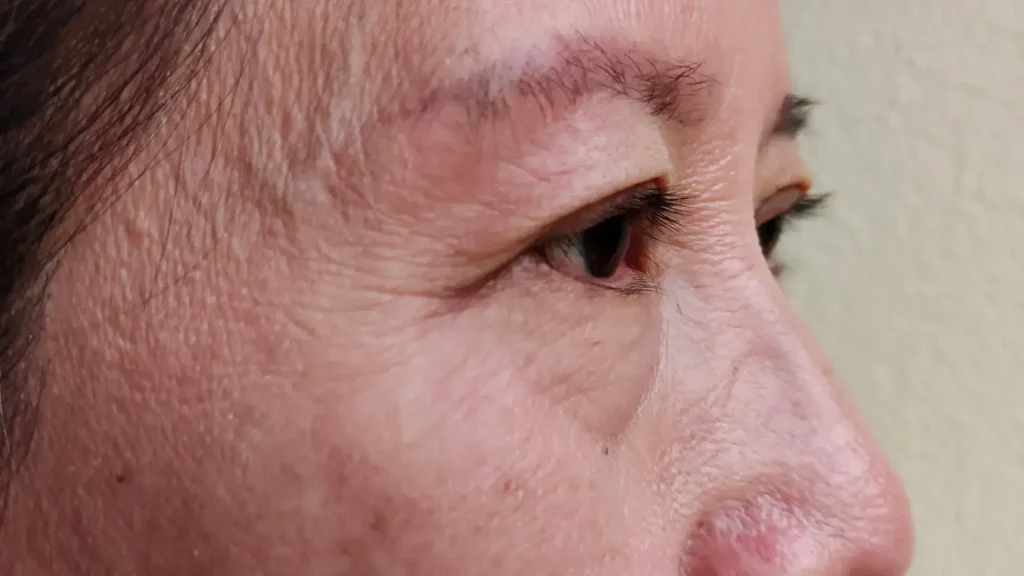
The success of Restylane tear trough treatment depends on careful patient selection and setting realistic expectations. A thorough consultation with a medical professional can help individuals understand the treatment procedure, advantages, and potential complication risks. They may consider several factors when selecting patients for Restylane tear trough treatment.
- Adults aged 21 and up seeking to reduce the appearance of nasolabial folds or enhance facial features can receive Restylane injections.
- Patients with severe allergies to hyaluronic acid properties or other Restylane ingredients, especially bacterial proteins, must not receive the treatment.
- Individuals with skin infections or bleeding disorders must also avoid Restylane injections.
- Pregnant women, breastfeeding women, and children below 20 must avoid getting the injections.
Moreover, ideal candidates are those with good health conditions and a distinct hollowing in the tear trough area. Restylane injections can significantly improve the appearance of the tear trough area, but they are not a permanent solution. Setting realistic expectations for patients can improve their satisfaction post-treatment.
The Restylane tear trough treatment results typically last twelve (12) to eighteen (18) months post-treatment. It’s important to understand that while Restylane can reduce hollowing and dark circles, it may not eliminate them. However, patients can opt for regular maintenance treatment to sustain the benefits.
Potential Complications and Management
Medical professionals must discuss these potential risks and management with patients, allowing them to make informed decisions before their treatment. Like other aesthetic or medical procedures, typical side effects may arise after the Restylane tear trough treatment.
- Swelling
- Redness
- Pain
- Bruising
- Headache
- Tenderness
- Lump formation
- Itching at the injection site
- Impaired hand function
If rare, severe complications occur, patients must immediately seek medical attention. They can effectively manage infection, allergic reactions, or vascular occlusion symptoms. Moreover, the common side effects may resolve within a few days to a week. Other strategies that can help manage these symptoms include the following, but must require medical professionals’ instructions:
- Ice application
- Massaging treatment area
- Dissolving the filler with hyaluronidase
- Antibiotics or other medications
Conclusion
Restylane tear trough treatment is a comprehensive approach to addressing these aging issues. Effective treatment requires a deep understanding of the tear trough’s anatomical considerations. The treatment employs specific injection techniques, ensuring precise placement and dosage of Restylane hyaluronic acid filler to replenish volume and smooth the under-eye area.
Furthermore, patient selection is crucial, with ideal candidates facing tear trough issues and with good overall health. The expected results show improvements in the appearance of the tear trough area. However, medical professionals’ expertise can help promptly manage potential complications such as bruising, swelling, and lumpiness to ensure patient safety.
FAQs
1. What is Restylane tear trough treatment?
Restylane tear trough treatment involves using hyaluronic acid filler to address hollowing and dark circles under the eyes, resulting in facial rejuvenation.
2. How long do the results of Restylane tear trough treatment last?
Restylane tear trough treatment results typically last twelve (12) to eighteen (18) months post-treatment, and regular maintenance treatments can help sustain the benefits.
3. What are the potential complications of Restylane tear trough treatment?
Potential complications may include swelling, redness, pain, bruising, headache, tenderness, lump formation, itching at the injection site, and impaired hand function.
References
- Diwan, Z., Trikha, S., Etemad-Shahidi, S., Alli, Z., Rennie, C., & Penny, A. (2020). A Prospective Study on Safety, Complications and Satisfaction Analysis for Tear Trough Rejuvenation Using Hyaluronic Acid Dermal Fillers. Plastic and reconstructive surgery. Global open, 8(4), e2753. https://doi.org/10.1097/GOX.0000000000002753
- Restylane ® Eyelight. (n.d.). In www.restylaneusa.com. Restylane USA. Retrieved June 4, 2024, from https://www.restylaneusa.com/docs/Restylane-Eyelight-IFU
Clinical aesthetics products refer to a category of products used in the field of medical aesthetics or cosmetic dermatology. These products are typically designed and formulated to be used under the supervision of healthcare professionals, such as dermatologists, plastic surgeons, or trained aestheticians. They are distinct from over-the-counter cosmetics in that they often contain active ingredients or formulations that require expertise in their application or administration.
Examples of clinical aesthetics products include:
-
Dermal Fillers: Injectable substances used to add volume, smooth wrinkles, and enhance facial contours. Examples include hyaluronic acid fillers like Juvederm and Restylane.
-
Botulinum Toxin (Botox): Injectables that temporarily paralyze facial muscles to reduce the appearance of wrinkles caused by repetitive movements, such as frown lines and crow's feet.
-
Chemical Peels: Solutions applied to the skin to exfoliate and improve its texture. They can treat acne, pigmentation issues, and signs of aging.
-
Laser and Light Therapies: Devices that emit focused light or laser energy to treat various skin conditions, including acne, scars, and signs of aging.
-
Prescription Skincare Products: Formulations containing active ingredients like retinoids (vitamin A derivatives), hydroquinone, or prescription-strength antioxidants to address specific skin concerns under medical supervision.


